

Role: Lead Product Designer
Timeline: 12 Weeks
Responsibilities: User Research, UX/UI Design, Prototyping, Stakeholder Alignment
Tools: Figma, Miro, User Interviews, Sketch
The Challenge:
FreshBooks' pricing page was creating a crisis of trust at the most critical moment in the customer journey. User interviews revealed widespread confusion, pricing shock, and frustration that threatened conversion rates and customer retention.
The Impact:
That quote from a user interview wasn't just feedback. It was a symptom of a bigger problem.
FreshBooks is built for solopreneurs and small businesses where every dollar counts. An unexpected $100 charge due to currency conversion isn't an inconvenience. it's a betrayal of trust that loses a customer for life.
My discovery process revealed the pricing page wasn't just outdated. It lacked transparency and clarity.

I moved beyond standard usability testing to conduct a full autopsy, correlating data from three sources:



The goal wasn't a new layout. The goal was to rebuild trust. Every design decision was tested against one question: "Does this make the user feel informed and in control?"
The old design operated on a "reveal-as-you-go" model that prioritized short-term conversions over long-term trust. Our research showed this backfired, users who felt tricked either abandoned or churned quickly.
I facilitated a charrette (design workshop) with stakeholders, not to present solutions, but to align everyone on this new principle: The pricing page must be the most transparent, helpful, and trustworthy page in our product.
We shifted from asking "How can we maximize immediate conversions?" to "How can we build lasting customer relationships through transparency?"

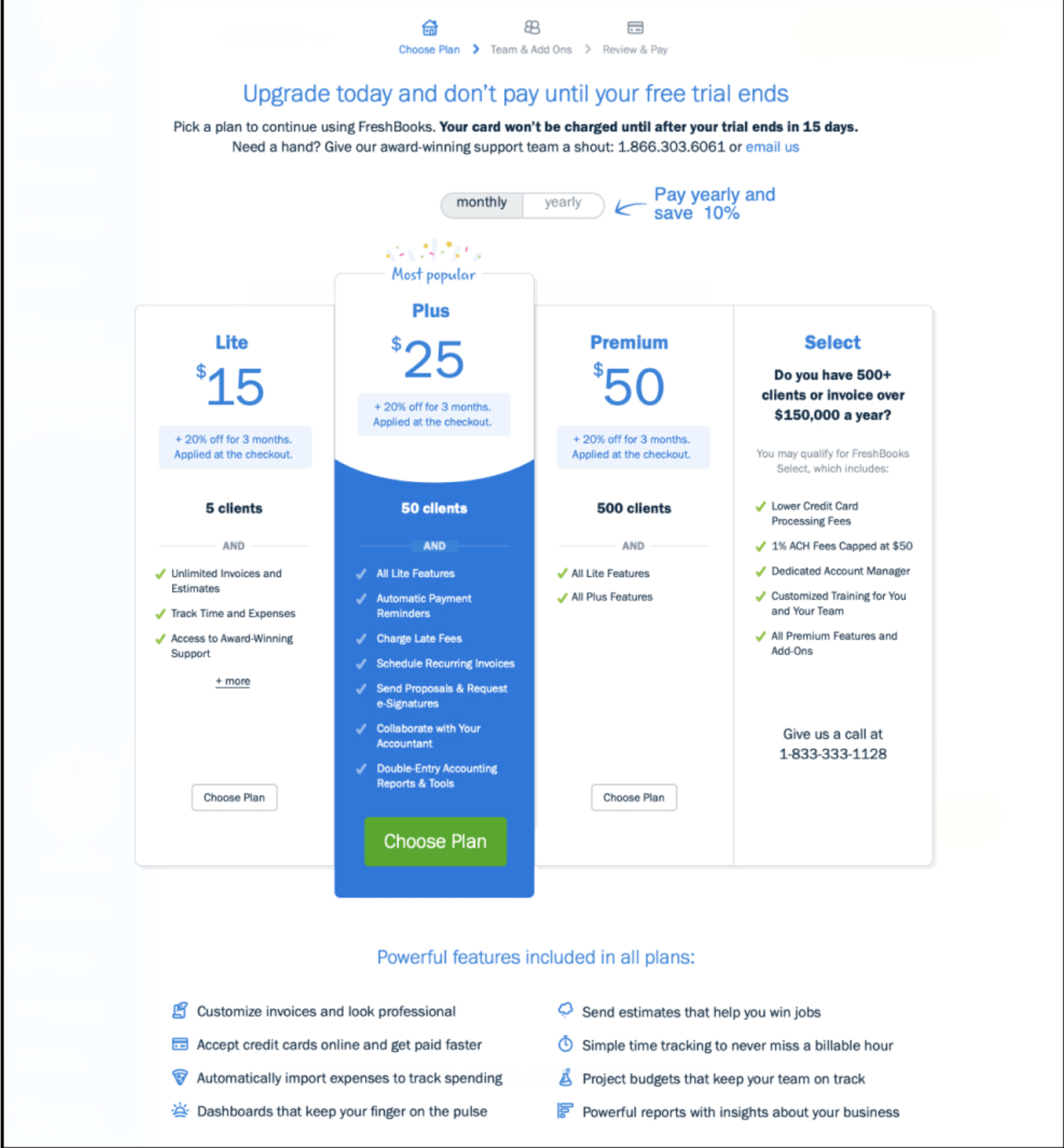
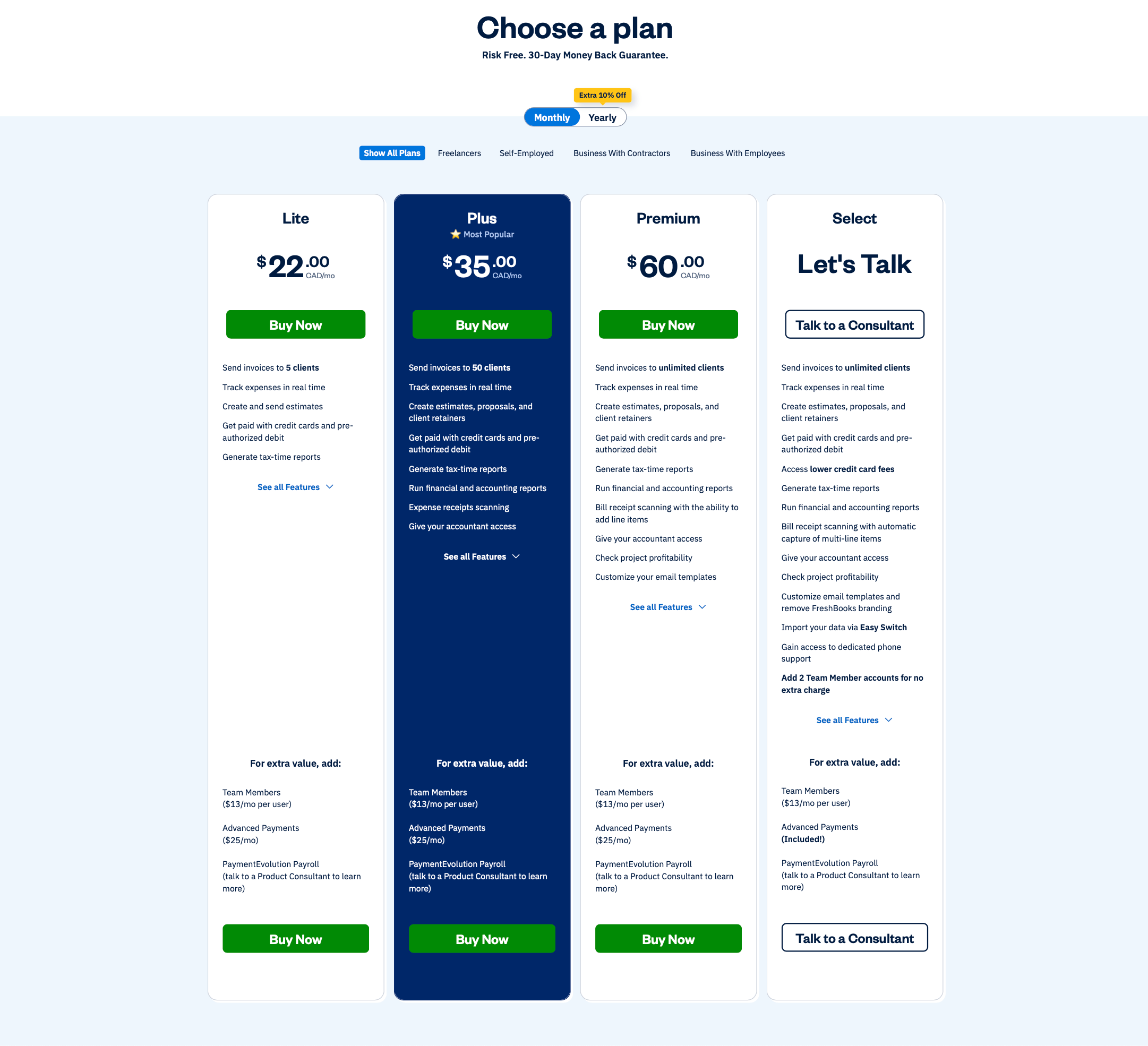
1. Transparent Pricing Architecture
2. Add-On Visibility
3. Plain Language Conversion
4. Trust Building Elements
Step 1: Plan Selection
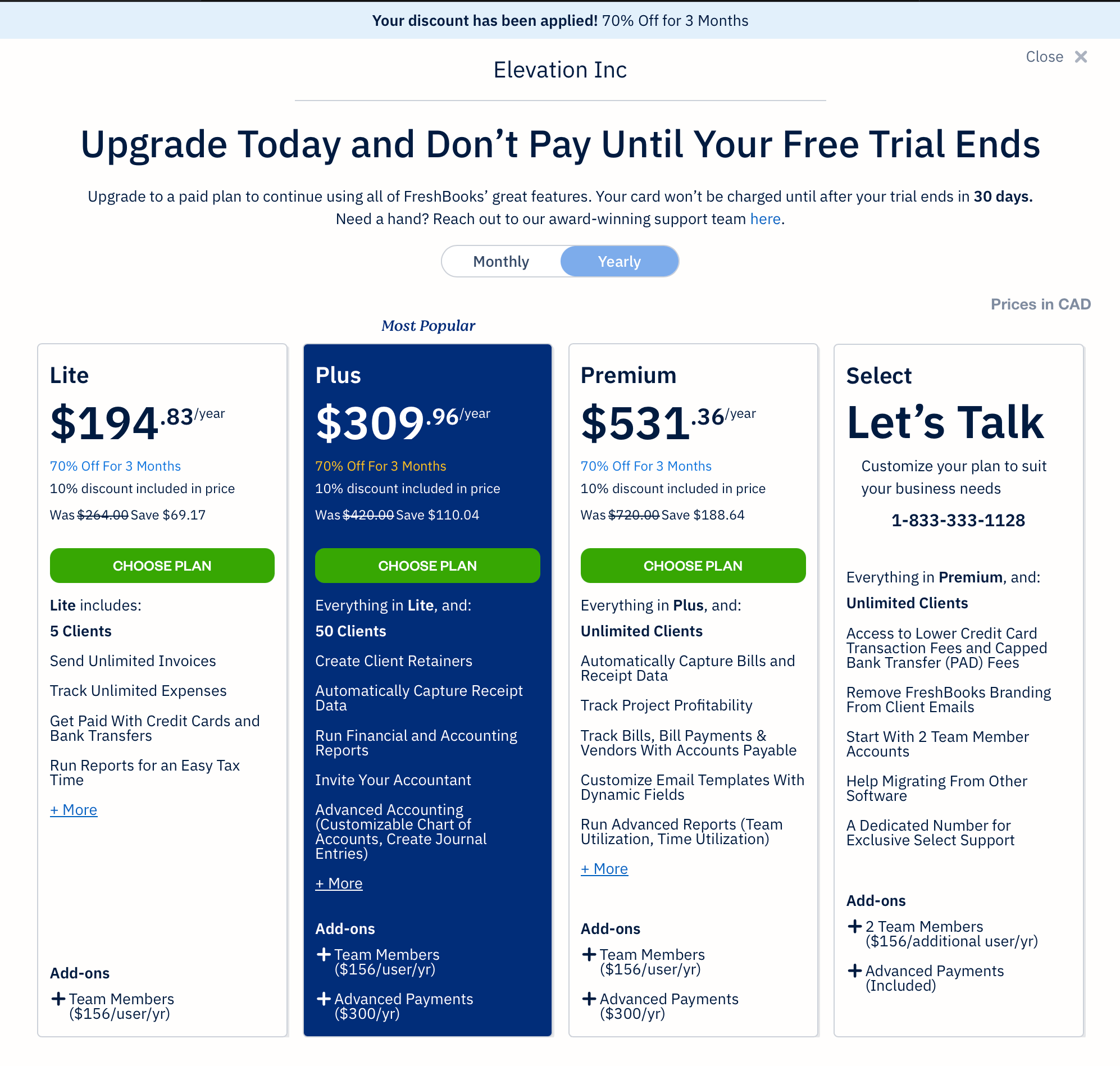
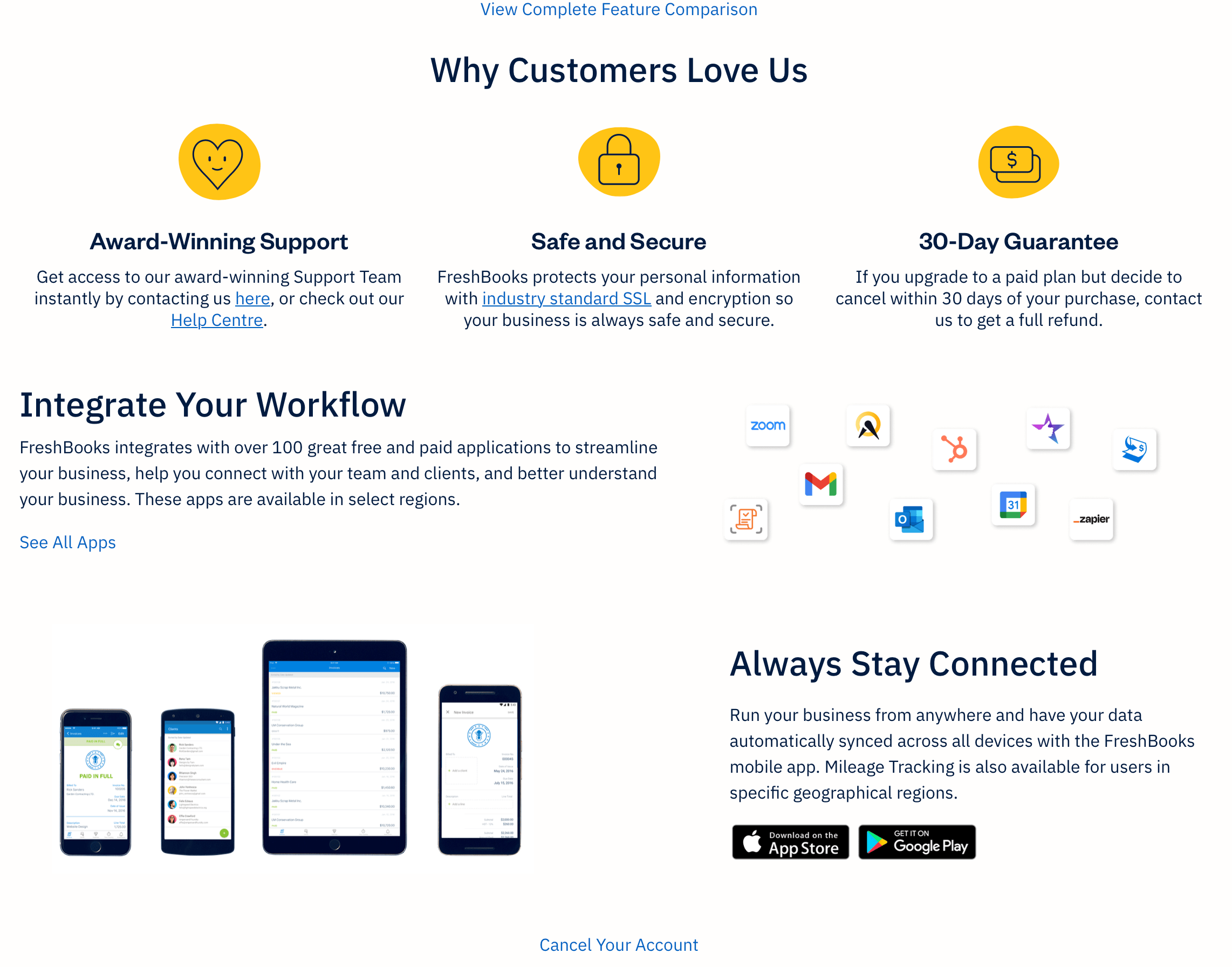
Step 2: Customization
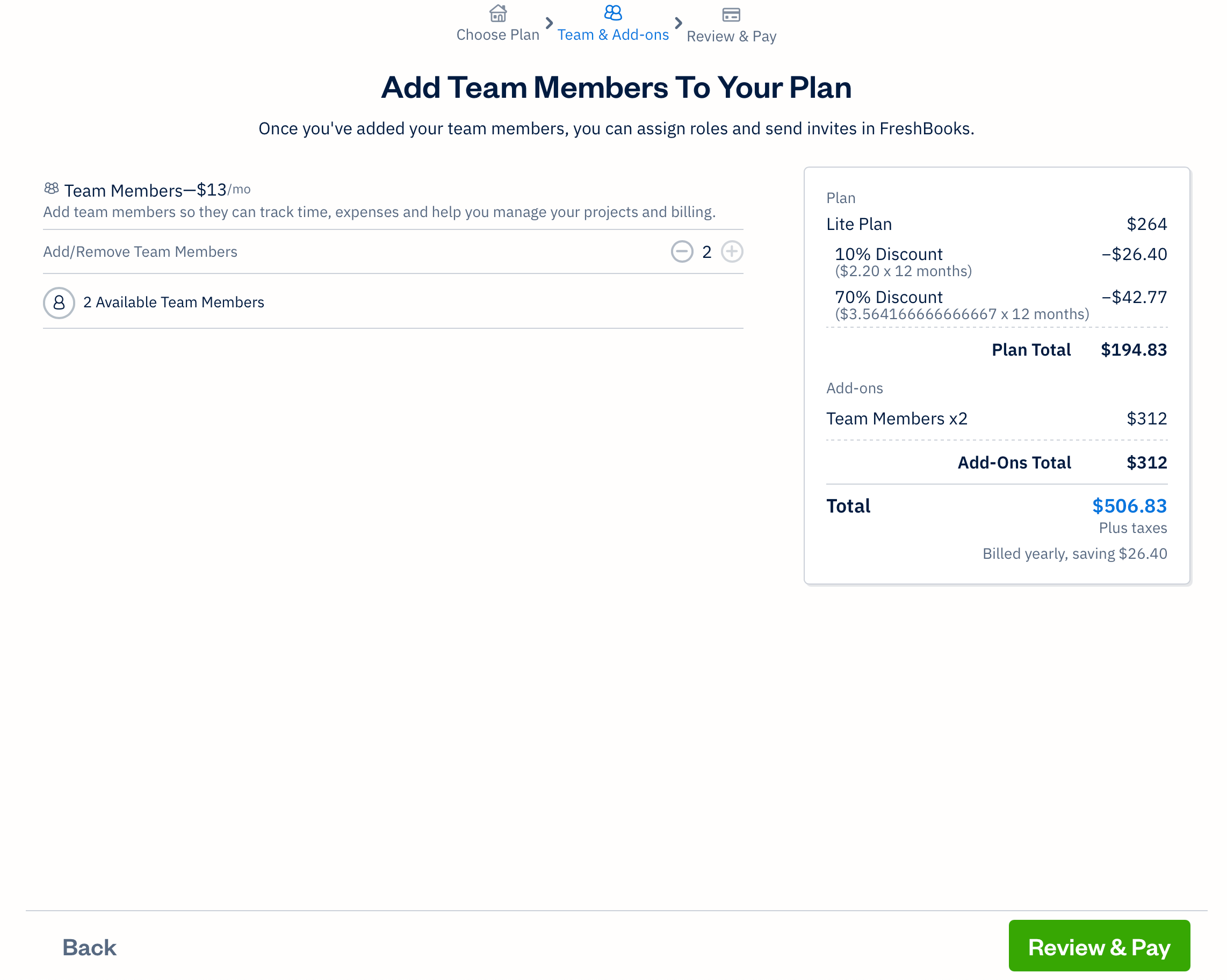
Step 3: Checkout
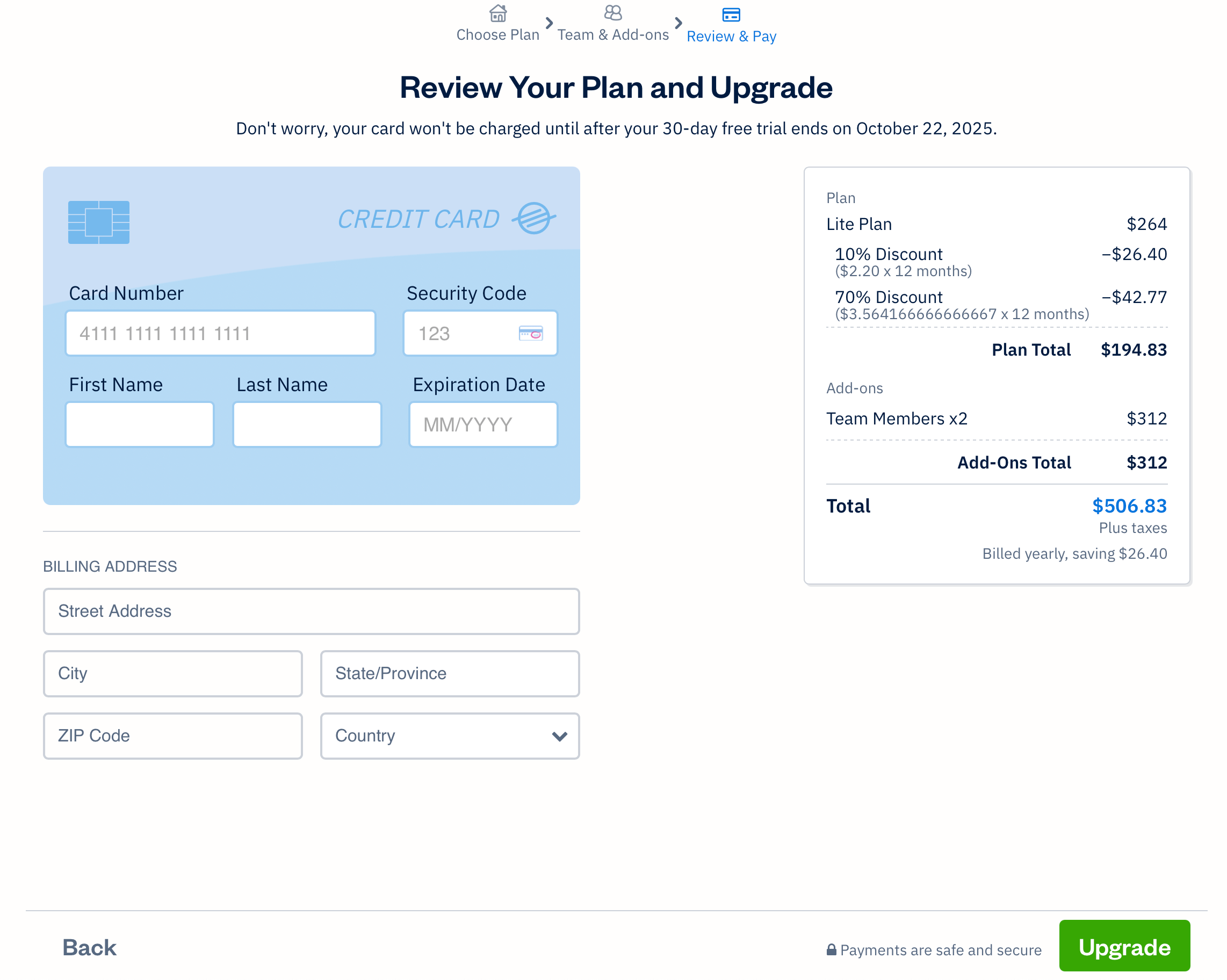
This project required me to operate at multiple levels:
The biggest insight was that trust isn't a "soft" metric it directly impacts hard business numbers. When users trust you, they convert better, stay longer, and require less support.
The most challenging part wasn't the UX design it was aligning multiple departments with different goals and metrics. Learning to speak each stakeholder's language was crucial.
Having concrete user quotes alongside analytics data made arguments undeniable. "5/5 users were confused by..." is more powerful than "I think this is confusing."
This project changed how FreshBooks approaches pricing beyond just this page:
The FreshBooks pricing redesign proved that the most transactional moments in a product journey are also the biggest opportunities to build lasting trust. By combining deep user empathy with business acumen and design excellence, I transformed a point of friction into a competitive advantage.
This approach doesn't just create better conversions it builds better customer relationships. And in the competitive SaaS landscape, that's the ultimate differentiator.